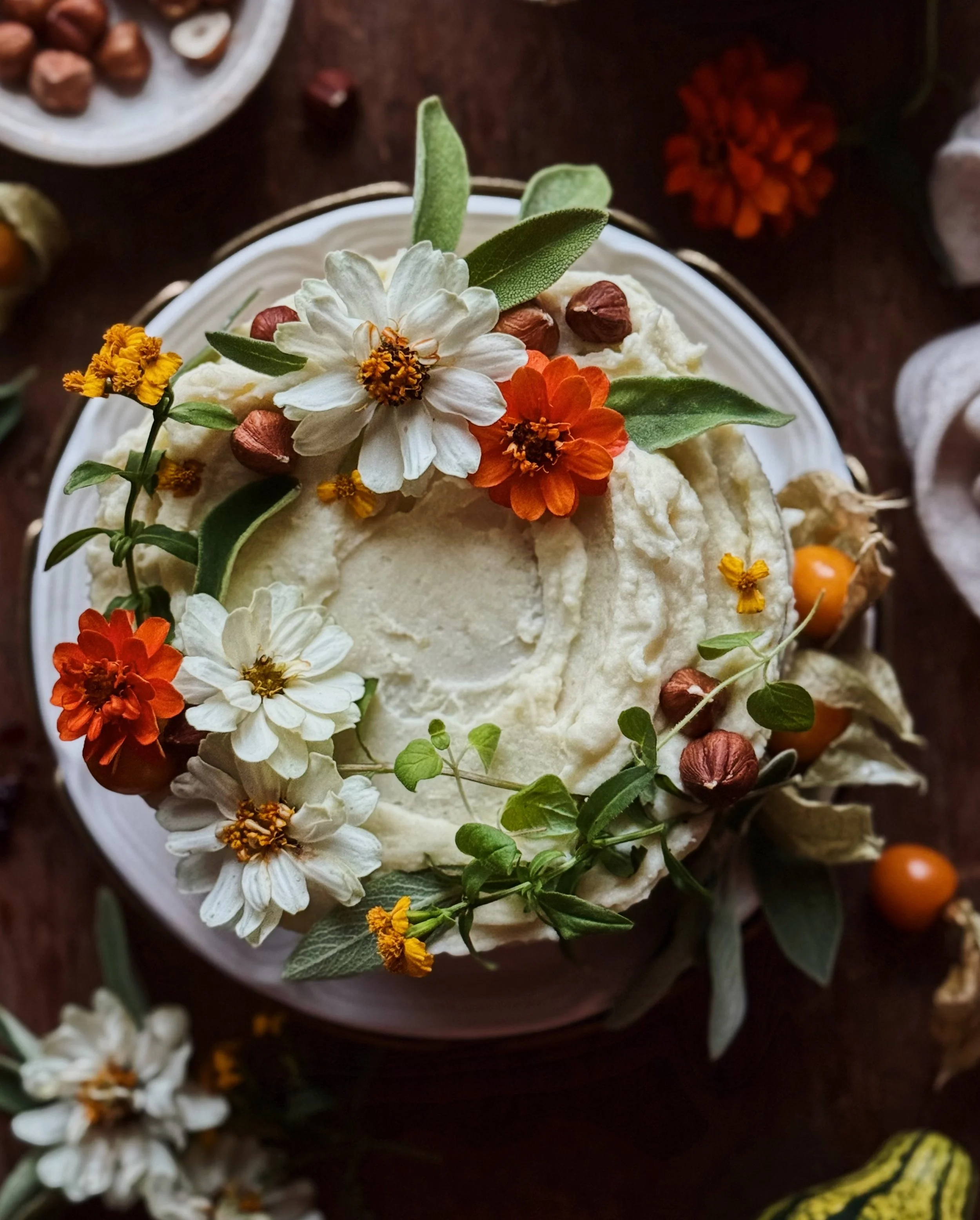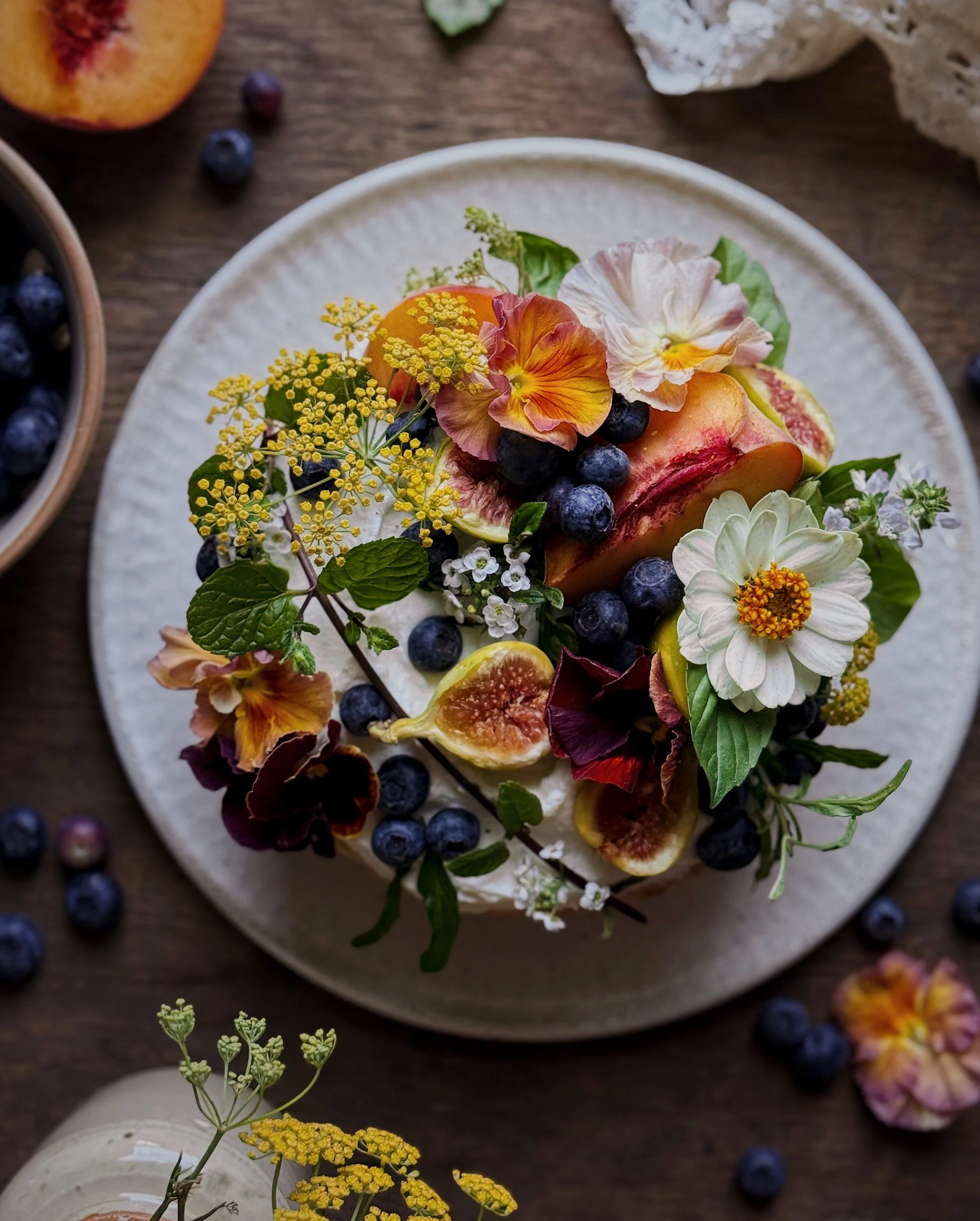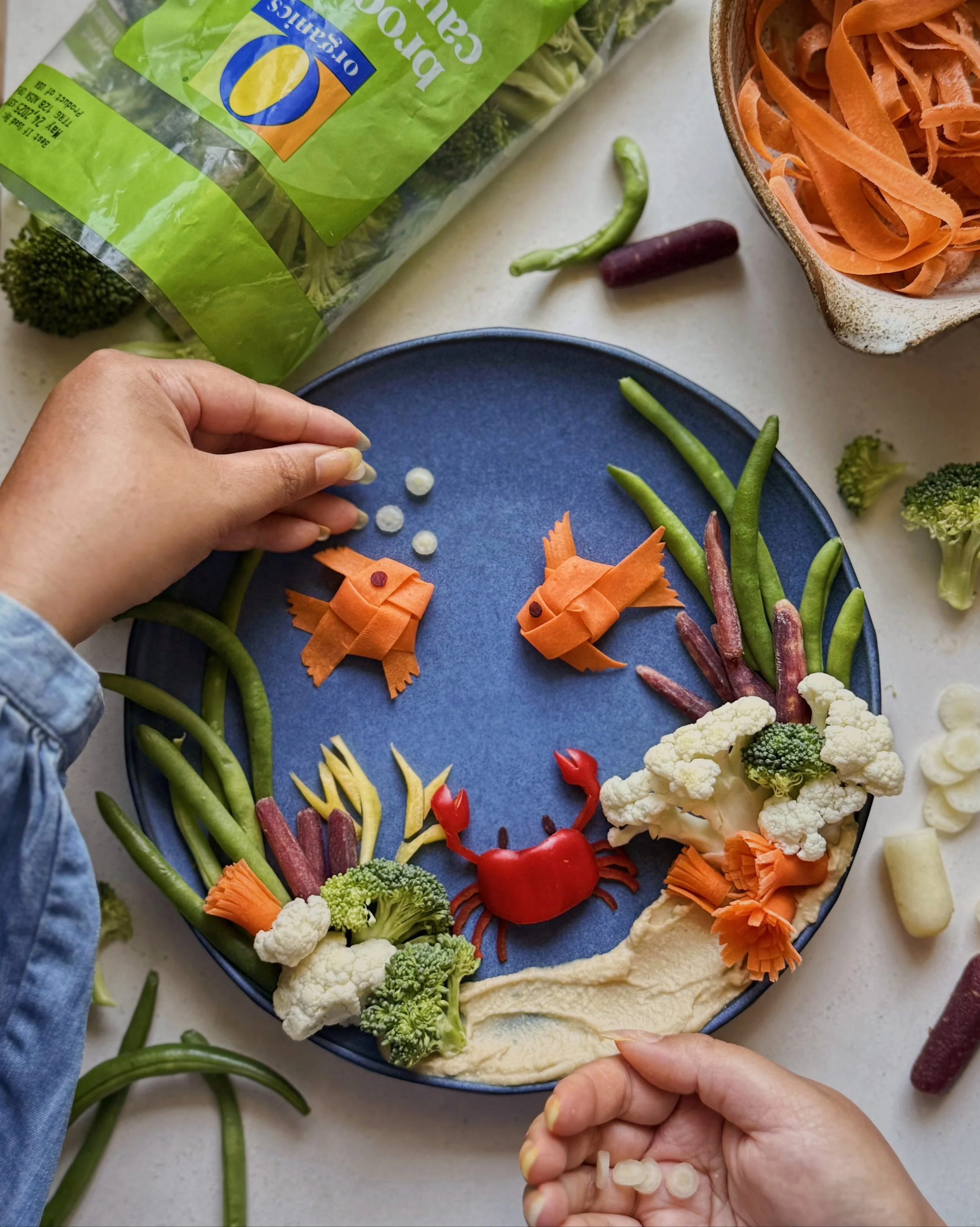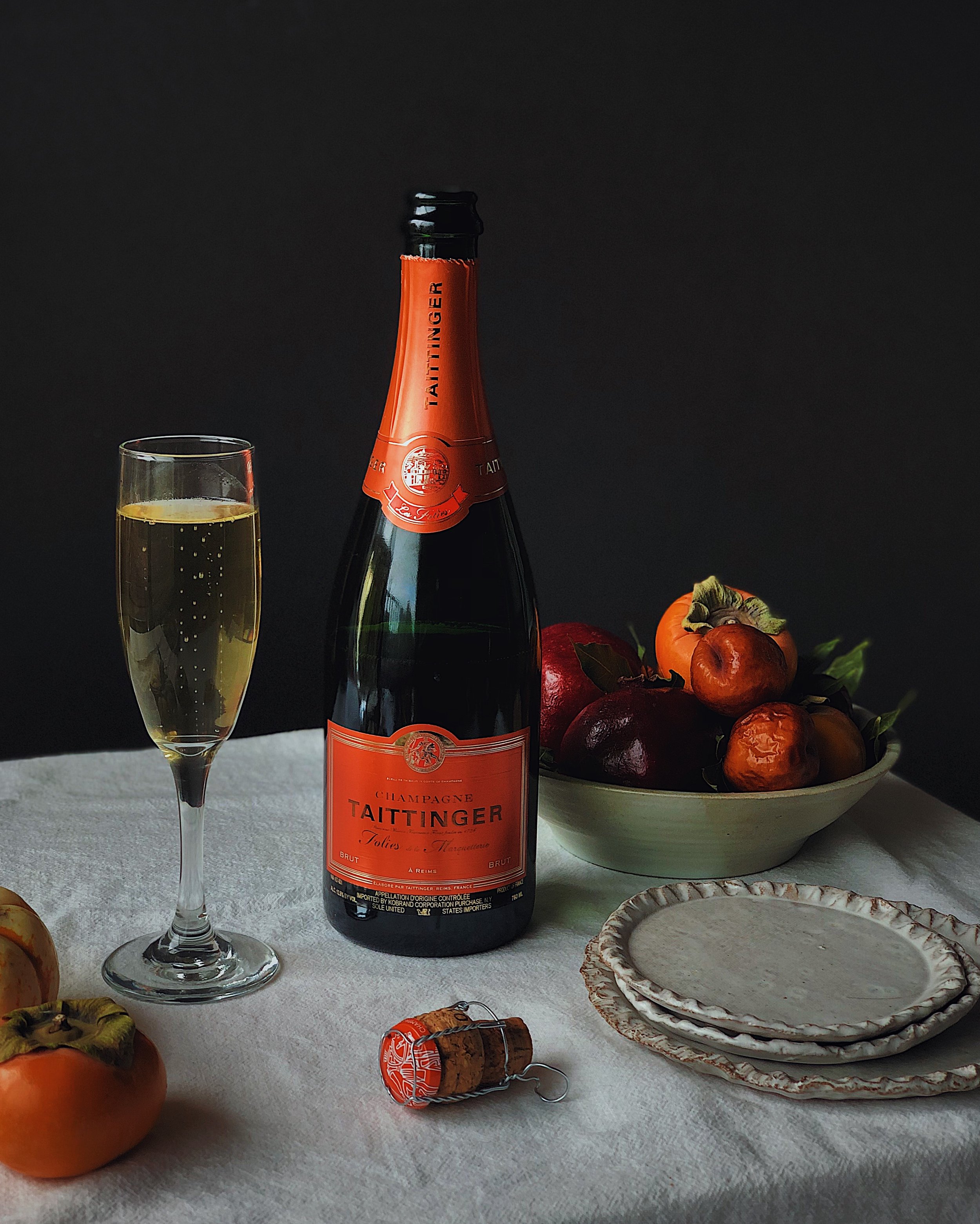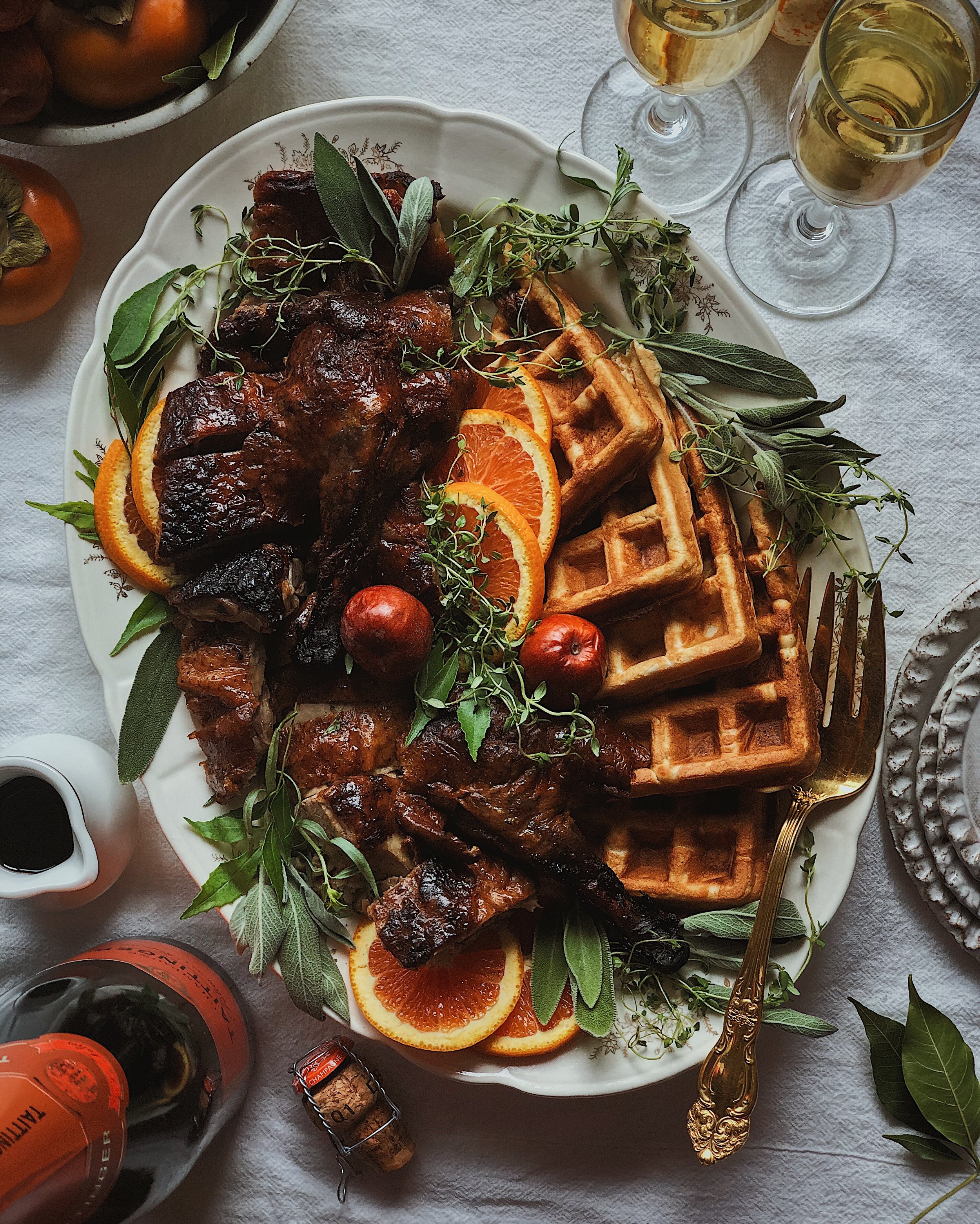A Festive Champagne Brunch Done My Way
/As the weather is finally starting to cool over here in San Francisco and we’ve finally started to get some much-needed rain, it finally feels right for me to shift my creative brain towards thinking about the festive season. It’s at this time of year that my mind is pulled to two extremes—I either want to be cozied up at home, warming my house with the smell of things baking in the oven and simmering on the stove, or traveling off to snowy places with charming town squares illuminated with holiday lights. Now that I’ve started busting out the fall-scented candles, I’m daydreaming about styling big platters of food and finding excuses to invite friends over for bubbly (but also about the prospect of actually getting to travel to someplace festive for the holidays this year). I am not big on family gatherings, but I do love so much the opportunity to celebrate small things with the people who are dear to me, and while that’s something we should do all year round, there is something about crisp cool air and gloomy skies that makes me crave that togetherness in my home.
For this blog post, I got to partner with Champagne Taittinger; founded in 1734, they are one of the last remaining family-owned and operated champagne houses. I am sharing an idea for a festive brunch idea to pair with Taittinger’s Les Folies de la Marquetterie, a wine that was created to be a tribute to autumn and those feelings of being at home. It mirrors a fall palette in its golden color and has delicate bubbles that remind me of the twinkling lights of the European Christmas markets in my daydreams. To me, it tastes very bright at first and then has a finish that is kind of oaky; in the tasting notes, it says it is “full-bodied and fruity on the palate with golden peach flavors leading to a finish with light woody notes”. It is a full flavored and complex champagne, so they recommend that it be paired with something robust like roasted meats.
I paired Taittinger’s Les Folies de la Marquetterie with Cantonese roast duck from a local restaurant and homemade waffles with scallions and lap cheong (sweet Chinese sausage) in the batter. The combination of duck and waffles was inspired by a brunch restaurant in London that I visited during Christmastime in 2019, so when I think of a festive brunch, I think of this combination! I thought it would be fun to style them together on this big vintage platter that I recently found on one of my antiquing hunts and I filled it out with slices of cara cara oranges, fresh jujubes, and lots of fresh herbs.
When you think of champagne pairings, you probably do not think of Cantonese roast meats. However, I recently came across this article on Food52 about why champagne goes with Chinese takeout. The article goes into how the two are perfect for one another because the bubbles of champagne allow you to better savor foods that are greasy by cleansing the tongue with every sip and its acidity provides balance when you are eating foods that are savory-sweet. So, although a Cantonese roast duck was probably not top of mind when roasts were noted as the recommended food pairing for Les Folies de la Marquetterie, I saw an opportunity to present a food from my childhood and my culture in a different light. And what I learned from that article was totally true! The succulent duck tasted sooo delicious with the champagne; taking a sip of it in between bites made each bite feel as if I was tasting the yummiest duck for the first time.
I think most Westerners do not see Cantonese roast duck as a delicacy because of its typical presentation—I am talking about the ones you see hanging in the windows of bakeries in Chinatown or in the hot deli of Asian supermarkets—but for me, it is very much a special occasion food. If you go to one of these at Chinese New Year, they will be absolutely packed with uncles and aunties trying to order their siu ngap (roast duck) and siu yuk (roasted pork belly with crackling skin). Getting a roast duck was always a special treat when I was young, and I loved everything about it from savoring the fattiest parts of the skin that the rest of my family didn’t want to the soup my parents would make by simmering the bones with pickled mustard greens afterwards. Now that I am grown and living in an area with so many local shops that sell them, I can get a roast duck whenever I want and I can make whatever sides I want—even waffles!—but it will always feel like a special occasion when I bring one home.
I was thrilled that Taittinger was willing to give me the opportunity to share this idea of pairing Chinese roast duck with their beautiful champagne. As you may know if you’ve read the captions of many of my Chinese food posts on my Instagram, I have been actively trying to present the foods of my culture in a way that showcases its complexity and deliciousness, as well as its worth. For too many too often, Chinese food is only known as cheap and ugly, despite its rich history and the sheer volume of possibilities it brings to the palate with all of its regional nuances. I am always so grateful to work with a brand that supports my efforts to rewrite the narrative of Chinese food in America and it means so much to me that Taittinger allowed me to showcase their special festive offering alongside a nostalgic dish. I am so proud to work with a brand that has such a rich heritage and prestige of its own, yet is still so open to diverse ideas.
Truth be told, I am not an expert when it comes to sparkling wines and their pairings, but duck is prominent in French cuisine just as it is in Chinese cuisine, and both cultures have iconic ways of preparing it that are absolutely delicious. So to me, sharing the duck dish that I grew up with as a pairing with this lovely champagne made lots of sense. No one would question pairing champagne with duck confit or duck à l'orange so this meal is my Chinese-American spin on that. If you are like me and colder days put you in the mood for celebrating things big or small, I hope you will consider making one of Taittinger’s champagnes a part of your celebration, and I hope that this post inspires you to think outside of the typical pairings to bring along a dish that is special to you.
Thank you so much to Champagne Taittinger for sponsoring this post!
